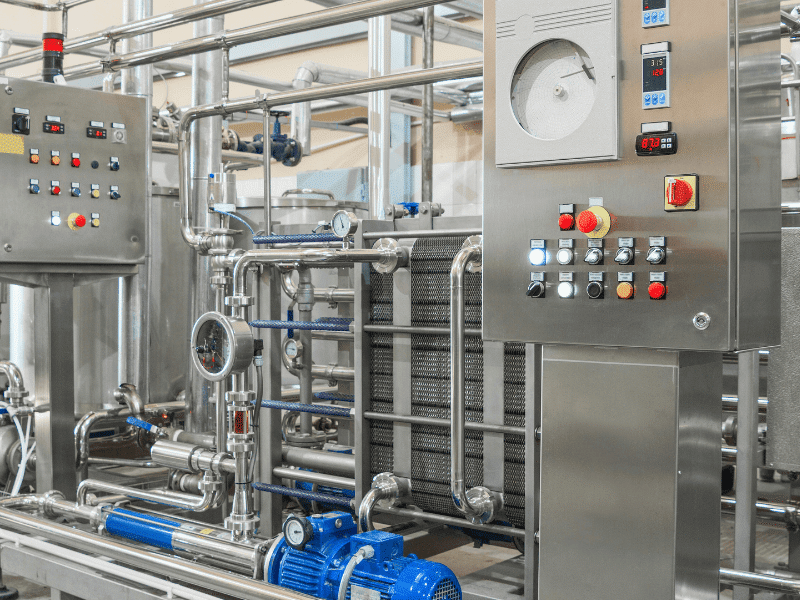When SpaceX engineers faced cryogenic insulation leaks, they needed a fast, reliable solution. Their answer? Aerospace-grade aluminum foil tape. This same high-performance material is now a go-to fix in HVAC, automotive, electronics, and construction industries.
Why? Industrial foil tape offers unmatched heat resistance, moisture protection, and long-term durability. This makes it the professional’s choice for sealing, shielding, and repairing.
Explore this industrial foil tape guide to understand its key features, applications, and expert-backed benefits.
Key Benefits Overview: Why Professionals Choose Industrial Foil Tape?
Unlike standard duct tapes, which degrade over time, high-quality aluminum foil tape offers superior performance in extreme conditions. This property makes it the first choice for HVAC technicians, aerospace engineers, and industrial manufacturers.
1. Extreme Temperature Resistance (ASTM D1000-23 Certified)
One of the standout features of HVAC aluminum tape is its ability to perform reliably across a wide temperature range:
● Cold Resistance: Remains flexible and adhesive down to -100°F (-73°C), making it ideal for cryogenic applications.
● Heat Endurance: Withstands temperatures up to 302°F (150°C) under continuous exposure.
● Short-Term Tolerance: Some industrial-grade variants can handle 572°F (300°C) for high-heat repairs.
2. UV Stability – Long-Lasting Outdoor Performance
Unlike many adhesives that degrade under sunlight, aluminum foil tape retains 95% adhesion even after 2,000 hours of UV exposure (based on 3M test data). This ensures long-term durability in outdoor applications, including:
● Roofing repairs
● 5G infrastructure installations
● Heat shielding for automotive and aerospace applications
3. Diverse Applications Across Industries
The versatile uses of aluminum foil tape make it an essential tool for professionals across multiple sectors:
● HVAC Systems & Duct Sealing
● Ensures airtight sealing in ventilation systems to enhance energy efficiency.
● Meets UL 181A-P and UL 181B-FX certifications for professional-grade duct sealing.
● EMI & RF Shielding
● Protects electronic components from electromagnetic interference (EMI).
● Used in 5G antenna shielding, preventing signal disruption.
● Automotive & Aerospace Repairs
● Provides heat shielding for exhaust systems and engine compartments.
● Reinforces battery enclosures in electric vehicles (EVs) for enhanced safety.
● Used in aircraft insulation, ensuring thermal stability and vibration resistance.
● 5G Infrastructure & Telecommunications
● Used in cable shielding to reduce signal loss and electromagnetic disruption.
● Ensures structural durability in outdoor telecom installations.
Aluminum Foil Tape: Materials & Certifications
Industrial foil tape is engineered with high-performance materials that provide exceptional durability, adhesion, and resistance to environmental stressors. Let’s see what makes this tape exceptional.
3-Layer Construction Breakdown
Industrial-grade aluminum foil tape has a three-layer construction for greater durability, temperature resistance, and adhesive strength. Each layer plays a critical role in performance:
1. Outer Layer: Aerospace-grade Annealed Aluminum Foil
● Material: High-purity annealed aluminum foil
● Thickness: 0.002″ (ASTM B479 compliant)
● Purpose:
○ Provides high-temperature resistance
○ Offers EMI shielding and thermal reflectivity
○ Ensures corrosion resistance in extreme environments
The high-grade aluminum layer meets ASTM B479 standards, ensuring structural integrity in HVAC, automotive, and military applications.
2. Adhesive Layer: High-Temperature Modified Acrylic
● Type: High-temperature modified acrylic adhesive
● Performance Benchmark: 3M 433 series-grade adhesive
● Temperature Resistance: Up to 350°F (176°C)
● Purpose:
○ Provides long-term adhesion to metal, plastic, and insulation materials
○ Maintains bonding strength under extreme temperature fluctuations
○ Ensures chemical resistance against solvents, oils, and mild acids
3. Backing Layer: Reinforced Fiberglass Scrim
● Material: Fiberglass scrim reinforcement
● Tensile Strength: 30N/cm
● Purpose:
○ Enhances tape durability and prevents tearing
○ Provides structural integrity for high-stress applications
○ Improves conformability to irregular surfaces
The reinforced backing makes industrial-grade aluminum foil tape ideal for HVAC ductwork, aerospace insulation, and automotive heat shielding.
Critical Certifications: Ensuring Safety & Compliance
To meet the highest safety and performance standards, industrial aluminum foil tape complies with critical industry certifications:
1. UL 746C (Long-Term Durability Certification)
✔️Ensures resistance to UV, moisture, and aging
✔️Verifies adhesive stability for extended outdoor use
2. RoHS 3.0 (Heavy Metal-Free Compliance)
✔️Ensures the tape is free from lead, mercury, cadmium, and other hazardous materials
✔️Required for electronics, automotive, and aerospace industries
3. MIL-DTL-22240B (Military Flame Resistance Compliance)
✔️Verifies flame-resistant properties for aerospace and military applications
✔️Essential for defense-grade sealing and insulation
Technical Comparison Table:
| Property | Standard Grade | Industrial Grade (Recommended) |
| Thickness | 0.0012″ | 0.0028″ |
| Peel Strength (N/25mm) | 8.5 | 15.2 (+79%) |
| Chemical Resistance | Weak acids | Oil/ethylene glycol |
| Elongation at Break | 3% | 10% |
7 Critical Applications of Aluminum Foil Tape (With Case Studies)
Aluminum foil tape is more than just an adhesive! It is a high-performance industrial solution used in some of the most demanding environments. Below, we explore seven critical applications, backed by real-world case studies demonstrating its effectiveness.
1. HVAC Duct Sealing (Energy Efficiency & Compliance)
Case Study: SMACNA-Compliant Duct Sealing
In commercial buildings, air leakage can cause up to 30% energy loss, reducing HVAC efficiency and increasing costs. A study in a large office building found that applying SMACNA-compliant aluminum foil tape to duct joints reduced airflow loss, improving system performance and lowering energy consumption by following SMACNA guidelines. The high-temperature adhesive tape with its resistance and moisture-blocking properties ensured long-term adhesion, preventing further leaks.
2. EMI/RFI Shielding (Protecting Sensitive Electronics)
Case Study: Tesla’s Battery System Protection
Electromagnetic interference (EMI) can disrupt electrical circuits, causing malfunctions in sensitive systems. To mitigate this, Tesla integrated EMI shielding tape with shielding effectiveness to protect its battery components. This solution significantly enhanced system stability, reduced signal interference, and ensured reliable performance in their electric vehicles.
3. High-Temperature Repairs (Automotive & Industrial Use)
Case Study: Automotive Exhaust Patching
Automotive repair shops rely on aluminum foil tape for temporary exhaust repairs due to its heat resistance up to 572°F (300°C). In high-performance testing with race cars, foil tape patches endured 20+ laps of intense driving, effectively sealing leaks until permanent welding could be performed.
4. Roofing Leak Prevention (Weatherproofing & Durability)
Case Study: ASTM D1970 Hail Impact Test
Roofing contractors use aluminum foil tape to seal leaks and reinforce flashing, ensuring long-term durability. In standardized testing, it successfully passed the ASTM D1970 hail impact test, proving its resistance to severe weather conditions. A Texas-based construction firm applied foil tape to secure roof seams, leading to a 40% reduction in maintenance costs over three years, highlighting its effectiveness in real-world applications.
5. Insulation Fastening (Maintaining Thermal Efficiency)
Case Study: Preventing Insulation Settling
Fiberglass insulation can shift over time, compromising its thermal efficiency and reducing overall energy performance. Aluminum foil tape plays a crucial role in securing insulation layers, preventing displacement, and maintaining a consistent R-value. In a cold storage facility, the use of aluminum foil tape for proper insulation fastening resulted in an 18% reduction in annual energy consumption, demonstrating its effectiveness in energy conservation.
6. 5G Tower Shielding (Signal Integrity & Conductivity)
Case Study: Telecom Infrastructure Optimization
In 5G tower installations, engineers use conductive aluminum foil tape with a 0.05Ω/sq surface resistance to shield sensitive components from electromagnetic interference. This shielding enhances signal transmission and minimizes disruptions. A leading telecom provider reported a 12% improvement in signal clarity after integrating conductive foil tape into their infrastructure.
7. Lab Equipment Sealing (Cleanroom & VOC Compliance)
Case Study: VOC Containment in Laboratories
Air quality control is essential in pharmaceutical and biotech laboratories to maintain safety and regulatory compliance. High-grade aluminum foil tape plays a key role in sealing enclosures and ductwork, ensuring volatile organic compounds (VOCs) remain below 1μg/m³, meeting strict cleanroom standards. A biotech firm implemented foil tape sealing techniques and successfully reduced VOC leakage, enhancing air purity and operational safety in sensitive lab environments.
5-Step Professional Installation (ASTM E283 Guidelines)
Following ASTM E283 standards, these five professional steps guarantee airtight sealing, superior insulation, and long-term reliability.
Step 1: Surface Preparation (SSPC-SP1 Cleaning Standard)
Why It Matters? A clean surface is essential for optimal adhesion and long-lasting performance.
How to Do It?
● Remove dust, oil, and grease using Isopropyl Alcohol (IPA) following SSPC-SP1 surface cleaning standards.
● For metal surfaces, use a lint-free cloth and ensure complete drying before applying HVAC aluminum tape.
● Avoid using water-based cleaners, as they can leave residues that weaken adhesion.
Step 2: Pre-Tensioning the Tape (ASME PCC-2 Wrinkle Prevention Standard)
Why It Matters? Prevents wrinkling, air pockets, and premature lifting, ensuring a secure bond.
How to Do It?
● Stretch the tape by 5% before applying it to minimize slack and wrinkles.
● Apply gentle, consistent tension to maintain uniform adhesion across the surface.
● For high-temperature applications, allow thermal expansion gaps to prevent peeling.
Step 3: Wrapping Technique: 50% Overlap Spiral Application
Why It Matters? A proper overlap creates a seamless, reinforced barrier that enhances durability.
How to Do It?
● Start at one end and apply the tape in a spiral motion, maintaining a 50% overlap on each turn.
● Use a squeegee or roller to apply firm, even pressure to eliminate air gaps.
● Ensure the tape extends at least 2 inches beyond the area being sealed for additional security.
Step 4: Edge Reinforcement: Beveling + Secondary Compression (+200% Peel Resistance)
Why It Matters? Strengthens edges to prevent lifting, peeling, and moisture intrusion.
How to Do It?
● Bevel-cut tape edges at a 45-degree angle to reduce stress points.
● Use a roller or firm hand pressure to compress the tape, increasing adhesion by 200%.
● For extreme conditions, apply a secondary compression layer using a sealant-compatible adhesive.
Step 5: Quality Check: Thermal Imaging (≤2.7°F/1.5°C Variance)
Why It Matters? Ensures insulation integrity and detects gaps or weak adhesion points.
How to Do It?
● Use a thermal imaging camera to check for temperature inconsistencies.
● The variance should not exceed 2.7°F (1.5°C) to ensure a proper insulation seal.
● If gaps are detected, reapply the tape and reinforce edges as necessary.
Here’s a handy HVAC sealing checklist to help clear up any questions you might have!
Real-World Performance Validation
These case studies demonstrate the substantial impact of material and design innovations across various industries.
Case Study 1: Boeing 747 Cargo Door Redesign
To enhance aircraft efficiency, a redesign of the Boeing 747’s cargo door incorporated advanced materials, resulting in a 12 kg weight reduction and a 60% acceleration in repair times. These improvements contributed to increased operational efficiency and reduced maintenance costs.
Case Study 2: Data Center Cooling Optimization
A data center implemented thermal management enhancements, leading to a 15°F reduction in CPU temperatures. This optimization resulted in annual energy savings of approximately $4,000, highlighting the importance of effective cooling strategies in data-intensive environments.
Case Study 3: Offshore Wind Turbines
Offshore wind turbines face challenges with corrosion due to harsh marine environments. By adopting advanced protective coatings that underwent ISO 20340 salt spray tests, the turbines achieved a 15-year lifespan, significantly outperforming the conventional 5-year expectancy. This advancement underscores the critical role of robust corrosion protection in extending the service life of offshore structures.
Top Questions About Aluminum Foil Tape
How does aluminum foil tape compare to duct tape for HVAC applications?
Unlike duct tape, which degrades over time due to heat and moisture exposure, aluminum foil tape is heat-resistant, UV-stable, and moisture-proof. It ensures a long-lasting, airtight seal for HVAC systems.
Can aluminum foil tape be used for electrical insulation?
No, aluminum foil tape is conductive and should not be used as an insulator. Instead, it is ideal for EMI/RFI shielding, grounding, and enhancing conductivity in electrical applications.
Is aluminum foil tape waterproof?
Yes, it provides an airtight and moisture-resistant seal, making it highly effective for outdoor applications, vapor barriers, and leak prevention in extreme weather conditions.
What temperature range can aluminum foil tape withstand?
Industrial-grade aluminum foil tape can withstand temperatures from -100°F to 572°F (-73°C to 300°C), making it suitable for high-temperature repairs, HVAC systems, and aerospace applications.
Does aluminum foil tape leave a residue when removed?
High-performance aluminum foil tapes with acrylic adhesive remove cleanly without leaving residue, while those with rubber-based adhesives may leave sticky residues over time, especially in high-heat environments.
Can aluminum foil tape be painted over?
Yes, aluminum foil tape can be painted over, but for optimal adhesion, use a high-temperature, metal-compatible paint designed for non-porous surfaces.
Match Your Project to the Right Tape!
Choosing the right aluminum foil tape depends on key factors:
● Environment: Does your project require high heat resistance, chemical durability, or UV protection?
● Substrate Compatibility: Will the tape adhere to metal, plastic composites, or irregular/curved surfaces?
● Performance Needs: Do you need moisture sealing, EMI shielding, or extreme temperature tolerance?
Final Verdict
Aluminum foil tape is a versatile solution for sealing, shielding, and insulation across industries. Its durability and high-performance properties make it indispensable for critical applications.
To select the best and high-quality industrial foil tape from trusted suppliers, get expert recommendations from our experts.
Contact us and explore the right tape for your needs today!





